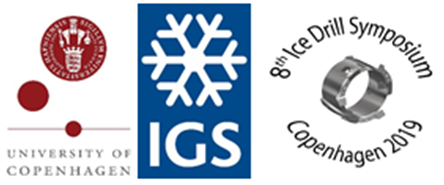Speaker
Description
The subglacial aquatic environment may provide unique information about microbial evolution and the Earth’s climate in the past. The prototype model of RECoverable Autonomous Sonde (RECAS-200) could penetrate through ice to the depth of 200 m by melting ice with thermal drill bit, then take water sample and detect the physical parameters (temperature, pressure, conductivity and pH) of subglacial water. RECAS-200 thermal sonde includes a cable that bear the weight of the sonde and is used for steering in such way that the weight of the sonde is partially compensated by the cable’s tension and is partially transmitted to the bottom. The verticality of RECAS-200 during penetrating is necessary for ensuring the verticality of borehole and preventing sticking of the sonde in the crooked hole. The influence of the center of gravity position, the presence or absence of cable in the sonde, the diameter and inclination of borehole on the force diagram is discussed. According to the required vertical load on the thermal bit, the permissible range of hanging force is determined. Using the principle of virtual displacement, the drilling trajectory of RECAS-200 is predicted based on inclination of borehole, the sonde inclination and force diagram. The minimum crooking radius of borehole to ensure the passability of the sonde is also calculated. The influence of rate of penetration and freezing speed of meltwater on the verticality and drilling trajectory of RECAS-200 is analyzed in order to choose safety drilling parameters.

